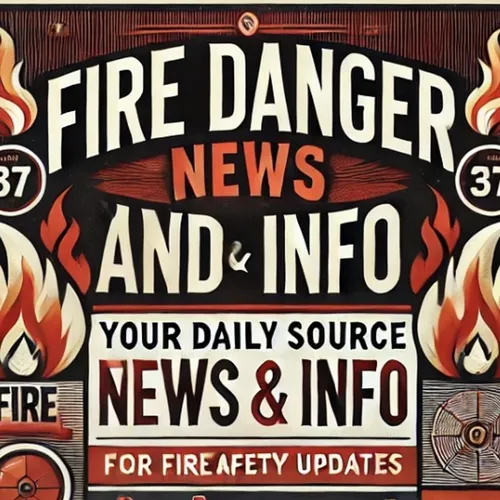Raging Wildfires Threaten the West: Elevated Fire Danger Persists Across the Region
- Author
- Quiet. Please
- Published
- Sat 06 Sep 2025
- Episode Link
- https://www.spreaker.com/episode/raging-wildfires-threaten-the-west-elevated-fire-danger-persists-across-the-region--67657541
The United States is facing continued fire danger as September begins, with above-normal wildfire risk projected in parts of the West, Hawaii, and a section of the Southern Plains according to the National Interagency Fire Center and the Drought.gov website. The threat in the West is fueled by ongoing drought, high temperatures, and dry conditions, and the coming weeks are expected to see heightened fire activity especially in regions west of the Rocky Mountains and isolated parts of the Northeast. The National Oceanic and Atmospheric Administration has updated its forecast to emphasize the elevated fire danger from the Southwest up through New England, driven by a combination of persistent heat and dry weather patterns. NOAA is also deploying artificial intelligence in its Next-Generation Fire System to enhance the speed and accuracy of fire detection for firefighting operations.
Recent incidents in California exemplify the ongoing threat. On September fifth, officials from the Shasta-Trinity National Forest reported work continues on three major fires in Trinity County. The Peak Fire, which began August twenty-fifth due to lightning, has burned over five hundred acres and remains only twenty-one percent contained. The Lick Fire, also started by lightning, covers thirty-six acres and is sixty-five percent contained. The Cedar Fire, believed to be caused by human activity, started September third, has burned over one hundred acres, and containment remains low at fifteen percent according to the U.S. Forest Service. Community meetings are underway to provide updates and coordinate ongoing response efforts.
Capital Press notes that while fire risk has begun to moderate in parts of the West as September progresses, uncertainties remain due to unpredictable weather shifts. Lightning, which triggered several large blazes in California and Colorado during recent weeks, remains a significant concern. For instance, the Turner Gulch Fire in western Colorado, also started by lightning, is still actively burning well into early September. Scientists interviewed by CalMatters emphasize that heat and lightning are prolonging California’s fire season, and these conditions are increasingly frequent with ongoing climate change.
Nationwide, predictive services from the National Interagency Fire Center continue daily updates, helping fire management officials prepare for dynamic changes in threat level. These forecasts direct the movement of firefighting resources and inform proactive strategies to protect life and property.
Beyond U.S. borders, Canada is battling a historic fire season, with over two point five million hectares burned in Saskatchewan alone and major fires ongoing in British Columbia, Alberta, and Ontario. These fires have led to thousands of evacuations and significant international support for suppression efforts, according to reports in the North American Seasonal Fire Assessment.
The persistent threat of wildfire is placing immense strain on local communities and insurance markets across the American West, as reported by ABC News, driving up premiums and forcing some homeowners to seek alternatives or abandon properties in high-risk areas. As the U.S. and neighboring countries move deeper into fall, changing weather will be closely watched to determine when and where fire conditions might finally ease.
Some great Deals https://amzn.to/49SJ3Qs
For more check out http://www.quietplease.ai
